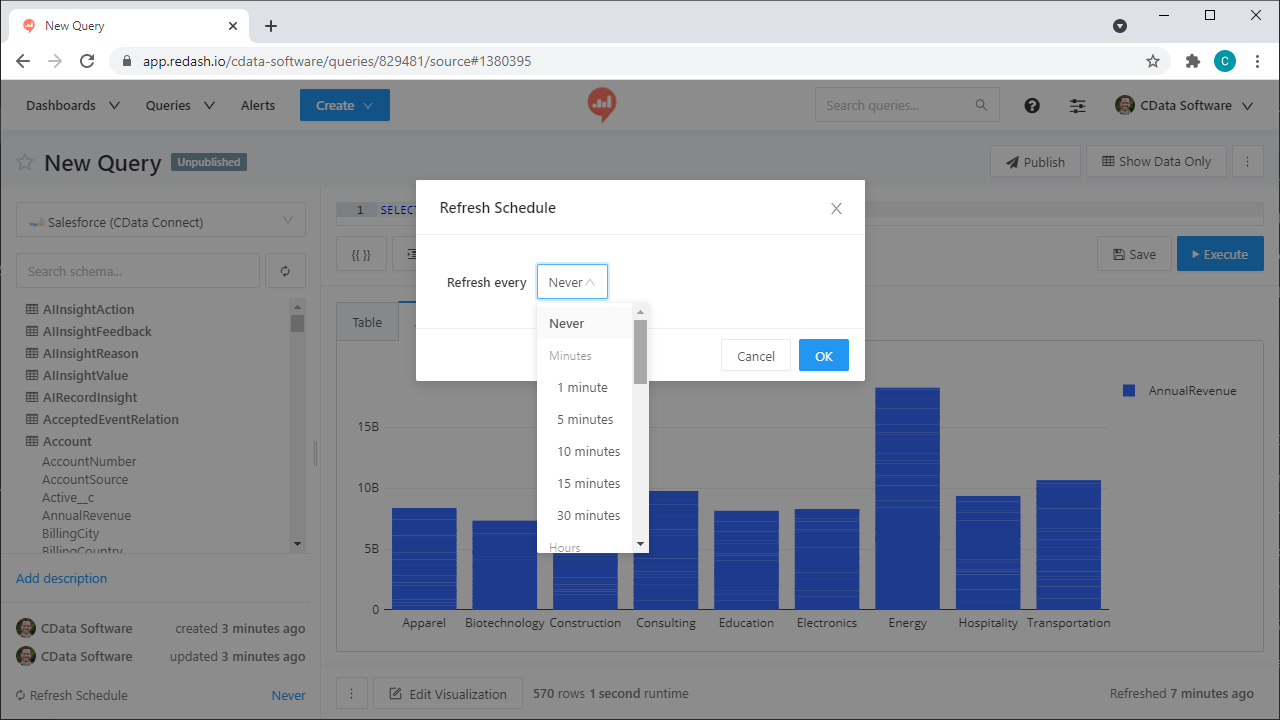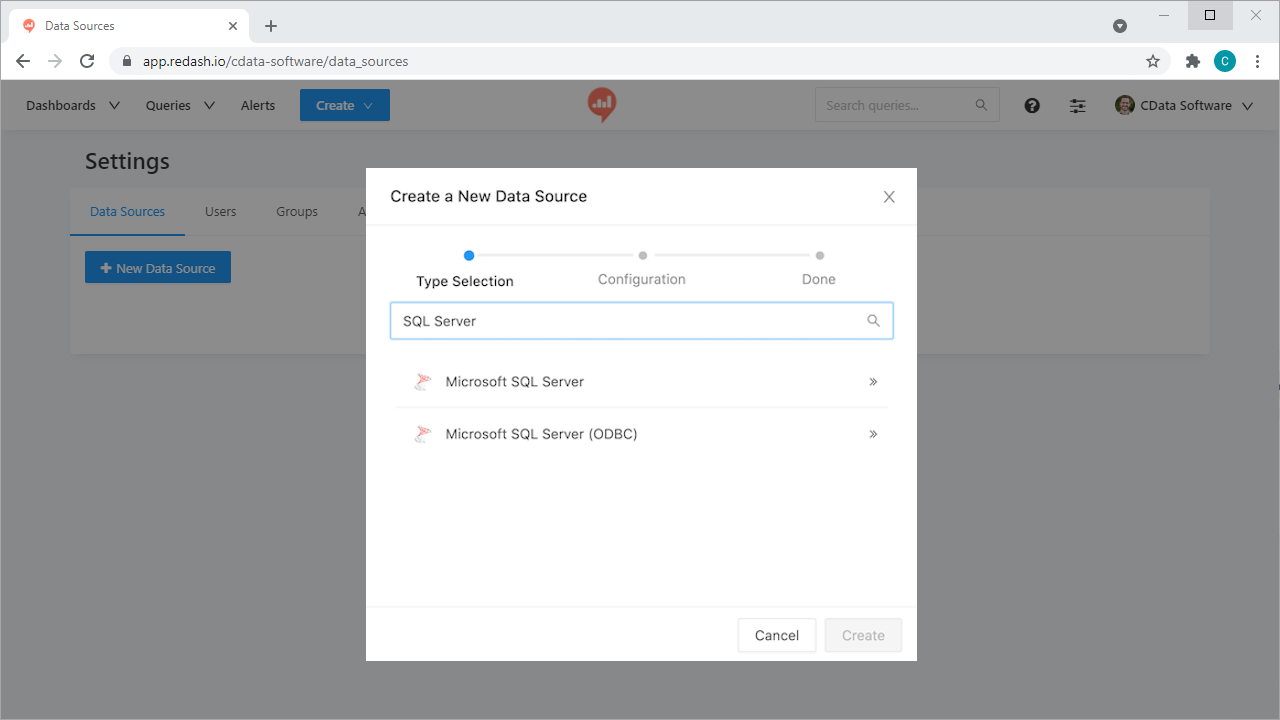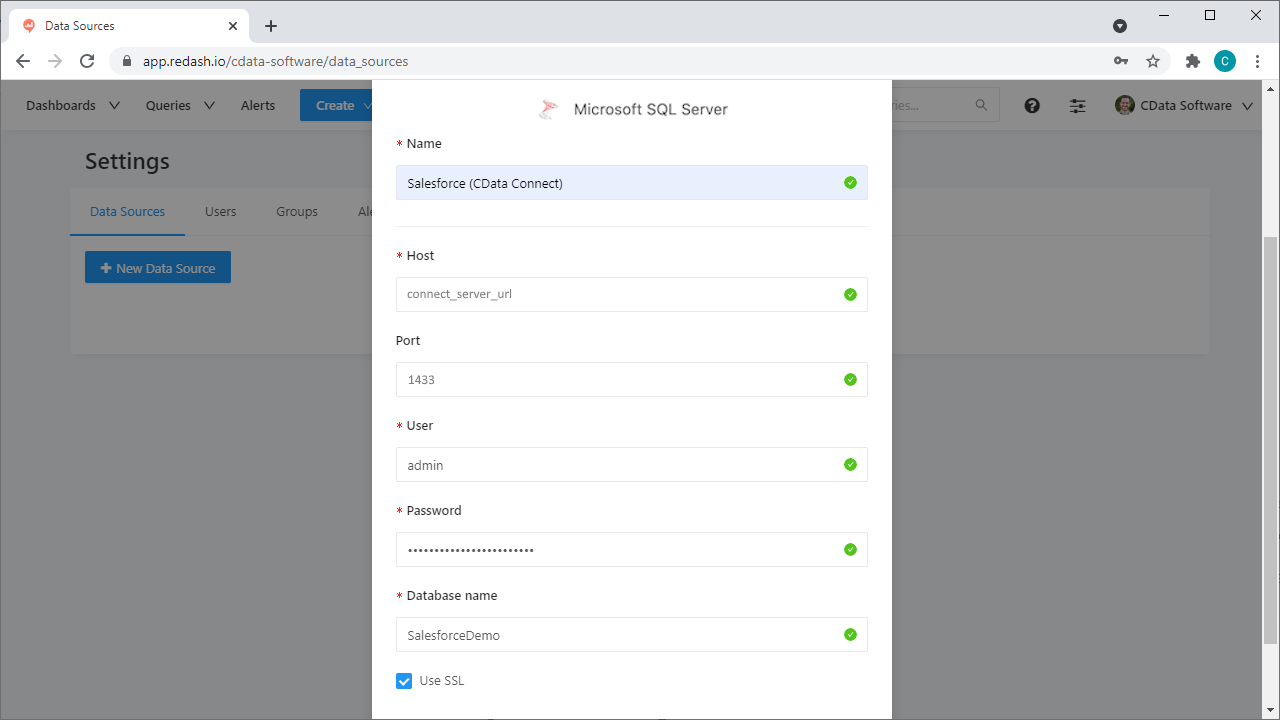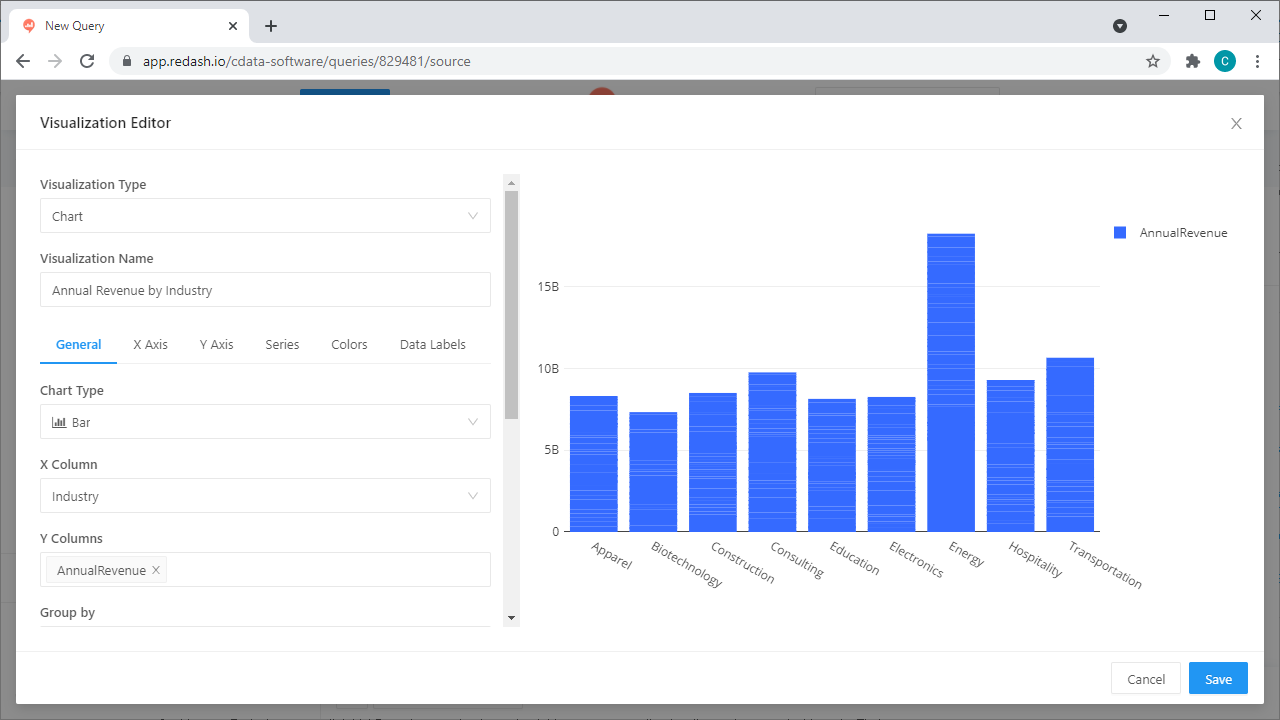Discover how a bimodal integration strategy can address the major data management challenges facing your organization today.
Get the Report →Build IBM Cloud Object Storage-Connected Dashboards in Redash
Use CData Connect Server to create a virtual SQL Server Database for IBM Cloud Object Storage data and build visualizations and dashbaords from IBM Cloud Object Storage data in Redash.
Redash lets you connect and query your data sources, build dashboards to visualize data and share them with your company. When paired with CData Connect Server, you get instant, cloud-to-cloud access to IBM Cloud Object Storage data for visualizations, dashboards, and more. This article shows how to create a virtual database for IBM Cloud Object Storage and build visualizations from IBM Cloud Object Storage data in Redash.
CData Connect Server provides a pure SQL Server interface for IBM Cloud Object Storage, allowing you to easily build reports from live IBM Cloud Object Storage data in Redash — without replicating the data to a natively supported database. As you build visualizations, Redash generates SQL queries to gather data. Using optimized data processing out of the box, CData Connect Server pushes all supported SQL operations (filters, JOINs, etc) directly to IBM Cloud Object Storage, leveraging server-side processing to quickly return the requested IBM Cloud Object Storage data.
Create a Virtual SQL Server Database for IBM Cloud Object Storage Data
CData Connect Server uses a straightforward, point-and-click interface to connect to data sources and generate APIs.
-
Login to Connect Server and click Connections.
![Adding a connection]()
- Select "IBM Cloud Object Storage" from Available Data Sources.
-
Enter the necessary authentication properties to connect to IBM Cloud Object Storage.
Register a New Instance of Cloud Object Storage
If you do not already have Cloud Object Storage in your IBM Cloud account, follow the procedure below to install an instance of SQL Query in your account:
- Log in to your IBM Cloud account.
- Navigate to the page, choose a name for your instance and click Create. You will be redirected to the instance of Cloud Object Storage you just created.
Connecting using OAuth Authentication
There are certain connection properties you need to set before you can connect. You can obtain these as follows:
API Key
To connect with IBM Cloud Object Storage, you need an API Key. You can obtain this as follows:
- Log in to your IBM Cloud account.
- Navigate to the Platform API Keys page.
- On the middle-right corner click "Create an IBM Cloud API Key" to create a new API Key.
- In the pop-up window, specify the API Key name and click "Create". Note the API Key as you can never access it again from the dashboard.
Cloud Object Storage CRN
If you have multiple accounts, you will need to specify the CloudObjectStorageCRN explicitly. To find the appropriate value, you can:
- Query the Services view. This will list your IBM Cloud Object Storage instances along with the CRN for each.
- Locate the CRN directly in IBM Cloud. To do so, navigate to your IBM Cloud Dashboard. In the Resource List, Under Storage, select your Cloud Object Storage resource to get its CRN.
Connecting to Data
You can now set the following to connect to data:
- InitiateOAuth: Set this to GETANDREFRESH. You can use InitiateOAuth to avoid repeating the OAuth exchange and manually setting the OAuthAccessToken.
- ApiKey: Set this to your API key which was noted during setup.
- CloudObjectStorageCRN (Optional): Set this to the cloud object storage CRN you want to work with. While the connector attempts to retrieve this automatically, specifying this explicitly is recommended if you have more than Cloud Object Storage account.
When you connect, the connector completes the OAuth process.
- Extracts the access token and authenticates requests.
- Saves OAuth values in OAuthSettingsLocation to be persisted across connections.
![Configuring a connection (SQL Server is shown).]()
- Click Save Changes
- Click Privileges -> Add and add the new user (or an existing user) with the appropriate permissions.
With the virtual database created, you are ready to connect to IBM Cloud Object Storage data from Redash.
Visualize IBM Cloud Object Storage Data in Redash
The steps below outline creating a new data source in Redash based on the virtual IBM Cloud Object Storage database in Connect Server and building a simple visualization from the data.
Create a New Data Source
- Log into Redash, click on your profile and click "Data Sources"
- Click the " New Data Source" button
- Select "Microsoft SQL Server" as the Data Source Type
![Creating a new Data Source.]()
- On the configuration tab, set the following properties:
- Name: Name the data source (e.g. IBM Cloud Object Storage (CData Connect))
- Host: The full URL to your CData Connect instance (e.g. https://connect_server_url)
- Port: The port of the CData Connect SQL Server endpoint (e.g. 1433)
- User: A CData Connect user
- Password: The password for the above user
- Database name: The name of the virtual database for IBM Cloud Object Storage (e.g. IBMCloudObjectStorage1)
- Click the checkbox to Use SSQL
![Configuring the new Data Source.]()
- Click Create
- Click the "Test Connection" button to ensure you have configured the connection properly
With the new Data Source created, we are ready to visualize our IBM Cloud Object Storage data.
Create a IBM Cloud Object Storage Data Visualization
- Click Create -> New Query
- Select the newly created Data Source (you can explore the data structure in the New Query wizard)
- Write a SQL statement to retrieve the data, for example:
SELECT Key, Etag FROM Objects WHERE Bucket = 'someBucket' - Click the "Execute" button to load IBM Cloud Object Storage data into Redash via CData Connect
![Loading IBM Cloud Object Storage data into Redash]()
- Use the Visualization Editor to create and analyze graphs from IBM Cloud Object Storage data
![Choosing a Database and Tables]()
- You can schedule the query to refresh and update the visualization periodically

SQL Access to IBM Cloud Object Storage Data from Cloud Applications
At this point, you have a direct, cloud-to-cloud connection to IBM Cloud Object Storage data from Redash. You can create new visualizations, build dashboards, and more. For more information on gaining SQL access to data from more than 100 SaaS, Big Data, and NoSQL sources from cloud applications like Redash, refer to our Connect Server page.












